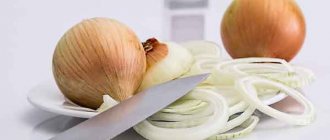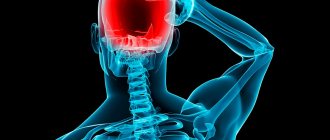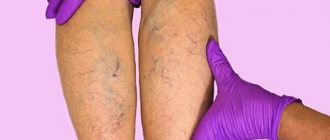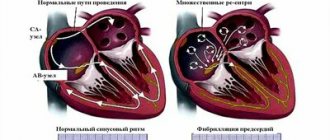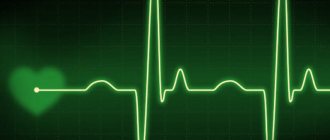DlyaSerdca → Heart Diseases → Bradycardia → Traditional medicine approaches to the treatment of bradycardia
Bradycardia is one of the variants of cardiac arrhythmia, in which the heart rate (HR) decreases below normal levels. A distinctive feature of this pathology is that its symptoms can be effectively eliminated using alternative medicine approaches, that is, traditional methods.
Main signs and symptoms of cardiac bradycardia
Bradycardia is a condition when the heart rate (HR) decreases, that is, a person's heart beats very slowly. The disease does not develop independently, but is a symptom of both cardiac pathology and diseases of other organs. In people with signs of bradycardia, the pumping function of the heart is impaired, which leads to stagnation of blood in the respiratory organs. Due to these symptoms, a lung abscess may develop. But sometimes bradycardia is a physiological norm, being a feature of people with a healthy heart or trained athletes.
The main reasons for the development of bradycardia symptoms in humans are divided into forms:
- Extracardiac, which develops with neuroses, vegetative-vascular dystonia, high blood pressure, pathologies of the brain, gastrointestinal tract, endocrine.
- Organic, developing against the background of cardiosclerosis, myocardial dystrophy, myocardial infarction.
- Drug-induced, occurring during treatment with drugs such as quinine, cardiac glycosides, sympatholytics, morphine, calcium channel blockers.
- Toxic, which occurs with an extreme degree of intoxication of the body during hepatitis, infectious diseases, uremia, phosphate poisoning.
- Physiological, developing against the background of regular smoking, unprofessional chest massage, and constant cold.
- Senile, which is the cause of natural aging of the body.
Severe bradycardia causes disruptions in the functioning of all body systems. During symptoms, circulatory disturbance occurs, which is directly related to oxygen starvation, which causes a person to lack the strength for normal life activities. Bradycardia is often accompanied by pallor of the mucous membranes and skin, convulsions and even loss of consciousness. The main symptoms of the disease that require immediate treatment include:
- chronic fatigue, weakness;
- lack of air, difficulty breathing;
- frequent dizziness;
- disturbance of attention, memory;
- increased or decreased blood pressure;
- short-term visual disturbances.
Treatment
- Conservative treatment of symptomatic bradycardia consists of effective treatment of the underlying disease. A sustained decrease in heart rate requires individual selection of drug therapy and observation by a cardiologist to monitor the condition.
- Surgical treatment involves implantation of a pacemaker. Our clinic uses modern dual-chamber pacemakers.
At the Clinical Hospital on Yauza, the choice of method of surgical treatment of bradycardia is carried out during a consultation with the leading cardiac surgeon - arrhythmologist of Russia - Professor A.V. Ardasheva.
Make an appointment
Bradycardia in children: causes
Sadly, this disease can manifest itself at any age, and the diagnosis of “sinus bradycardia” in children is quite often noted. We have discussed what it is in adults, but in young patients the pathology will have slightly different criteria. The baby's heart beats faster, so the indicators change. A diagnosis of bradycardia in children can be made in the following cases:
- if the heart rate of a newborn baby is below 100 beats per minute;
- for children from one to six years old - less than 70;
- for teenagers – from 60 and below.
As a rule, such deviations from the normal rhythm, even if they do not have any external manifestations, do not lead to anything good and in the future can become the cause of the development of many pathological conditions. Therefore, the sooner bradycardia is identified, its cause is determined and treatment is prescribed, the greater the chance of avoiding complications that cerebral hypoxia can cause. The reasons that caused this pathology are also different. Often it can be caused by such ordinary things as holding your breath, fear, or impressions accumulated during the day (many children have an order of magnitude lower heart rate in the evening than in the morning). In addition, bradycardia can be caused by:
- neuroses, endocrine disorders in adolescents;
- fetal hypoxia;
- increased intracranial pressure;
- infectious diseases;
- fast growth;
- lead poisoning, nicotine;
- hypothyroidism
Nutrition for the prevention and treatment of pancreatitis
Our food affects our overall health and well-being and plays an important role in the prevention of gastrointestinal diseases and chronic pancreatitis in particular. A diet with insufficient protein and excess fat can negatively affect the health of the pancreas, causing it to become overworked and causing it to overproduce enzymes. In addition, excess weight and obesity caused by an unbalanced diet are often combined with elevated levels of triglycerides in the blood, which contributes to the accumulation of fat in the pancreas and the development of pancreatitis.
How to eat to keep your pancreas healthy?
- do not consume more calories from food and drinks than are expended (on average, an adult needs 2200 kcal per day with normal exercise);
- eat a varied diet, adding fiber-rich foods to your diet - unprocessed grains, vegetables and fruits;
- limit foods high in saturated fat, cholesterol and easily digestible carbohydrates;
- consume good quality fermented dairy products;
- eat enough proteins;
- reduce sugar (<25 g per day) and salt (<5 g per day) intake;
- exclude from the diet foods that increase the risk of developing pancreatitis.
To prevent pancreatitis, it is advisable to eat a balanced diet or follow healthy eating recommendations, according to which the basis of our diet should be whole grains (unprocessed corn, millet, oats, wheat, brown rice, buckwheat and other cereals), unsaturated vegetable oils (olive and sunflower), a variety of fruits and vegetables (potatoes limited), as well as legumes and nuts. Proteins in the diet should be boiled, baked or stewed with lean meat, poultry or fish.
What foods does the pancreas not like?
- sausages, salami and other products containing food colors and flavors;
- fatty and fried foods;
- sweets;
- products containing trans fats and simple carbohydrates (most baked goods and semi-finished products).
How to prevent the development of acute pancreatitis?
Gallstone disease is one of the main causes of acute pancreatitis. If you eat a lot of fatty foods and exercise little, excess cholesterol forms in the blood, which is excreted in bile. When the bile produced by the liver contains too much cholesterol, gallstones form in the gallbladder. Therefore, a balanced diet helps reduce the risk of developing gallstones and pancreatitis at the same time. If you want to lose weight, do it gradually. With sudden weight loss, the liver produces more cholesterol, which also increases the risk of gallstones.
In addition to diet, stopping smoking, drinking small doses of alcohol or quitting it will help prevent pancreatitis.
Diet for chronic pancreatitis
Diet is one of the means of complex therapy of chronic pancreatitis and the prevention of its exacerbations, both in Russian and foreign practice. Dietary recommendations for chronic pancreatitis are made individually, taking into account the type and severity of the underlying disease and the presence of concomitant diseases. In case of exacerbation of chronic pancreatitis, a gentle diet No. 5p according to Pevzner is used, which differs significantly from the diet used during remission, and must be prescribed by the attending physician.
Basic principles of diet outside of exacerbation of chronic pancreatitis
- frequent meals in small portions approximately every 3-4 hours (should be 5-6 times a day);
- eating slowly and chewing food thoroughly;
- avoiding foods that are too hot or too cold;
- exclusion of foods that stimulate increased production of hydrochloric acid (sour fruits and berries, concentrated broths);
- increasing protein consumption (cottage cheese, meat, fish) and reducing foods containing carbohydrates and fats;
- Cooking is done by boiling, steaming, stewing or baking in the oven.
Exacerbations of chronic pancreatitis and intense pain attacks in the upper or middle abdomen can be triggered by the intake of rich, fatty foods, alcohol, carbonated drinks and certain foods.
Foods and drinks that may exacerbate chronic pancreatitis
- sour, spicy; fried, smoked, salted foods;
- canned food and marinades;
- vegetables rich in essential oils and with coarse fiber (radish, onion, white cabbage, radish);
- fatty meats and fish
- fresh bread;
- concentrated meat and fish broths;
- canned foods;
- strong coffee, cocoa and carbonated drinks.
Proper nutrition prevents exacerbations and helps slow down inflammatory processes in the pancreas.
Conduction system of the heart
To better understand why the heart beats too rarely, it is necessary to know the basic structure of the conduction system of the heart.
The myocardium, or heart muscle, contracts under the influence of exciting electrical impulses. They are formed in the sinus node, a collection of special cells in the area of the right atrium. This is the pacemaker of the first order. When the formation of signals slows down, sinus bradycardia occurs.
Once formed in the sinus node, the electrical signal travels along the conduction pathways of the atria. When this process is disrupted, sinoatrial blockades of varying degrees occur. Bradycardia is caused only by complete sinoatrial block, when the impulse formed in the sinus node cannot pass through the atria and cause excitation of the heart muscle. In this case, there are practically no contractions of both the atria and ventricles.
- How dangerous is bradycardia and is it life-threatening?
Under these conditions, the atrioventricular node, another cluster of cells located between the atria and ventricles, takes over the function of the source of electrical signals. Therefore, it is called a second-order pacemaker. Impulses in it are formed at a lower frequency than in the sinus node, about 40 - 60 per minute. In this case, the ventricles contract more slowly, and bradycardia occurs due to the presence of a rhythm from the atrioventricular junction.
In the atrioventricular node itself, a disturbance in the passage of the electrical signal can also occur - atrioventricular block. In this case, the atria contract in a normal rhythm emanating from the sinus node (more than 60 per minute), but excitatory signals to the ventricles either pass with a delay, or some of them cannot be carried out, or complete atrioventricular block occurs, when the ventricles do not receive electrical energy at all. stimulation and cannot contract.
At the same time, the third-order pacemaker begins to function - these are cells located in different parts of the conduction system of the ventricles. The impulses in them are generated only at a frequency of 25 - 40 per minute, so a severe degree of bradycardia occurs.
Recipes using healing natural ingredients
- Pour 20 grams of dried yarrow with 200 milliliters of boiling water, put on low heat and boil for 10–15 minutes.
The decoction must sit for at least 1 hour, after which treatment can begin. Drink this decoction 1 tablespoon 3 times throughout the day, regardless of meals.
This decoction is easy to prepare at home and, just as important, allows you to quickly normalize your heart rhythm. However, there are no time restrictions for treatment with yarrow decoction.
- Pour 15–20 grams of crushed dry hawthorn berries into 100 milliliters of pure alcohol. The tincture should be prepared in a glass container with a tight lid. After pouring, let it sit for at least 10 days. Take 10 drops of hawthorn tincture 3 times throughout the day, and the drops must be diluted in 1 tablespoon of water. A course course is recommended, with mandatory breaks.
Treatment with hawthorn tincture can be combined with treatment with valerian, mixing the tinctures in equal parts. Thus, a remedy is obtained that effectively eliminates bradycardia, has a pronounced calming effect, and normalizes sleep.
Pour 10–15 grams of dry motherwort herb into 200–250 milliliters of boiling water and leave for 1.5–2 hours. Take the infusion 1 tablespoon 3 times throughout the day.
As you can see, the recipe is extremely simple to make at home. It should be noted that motherwort infusion is especially effective when cardiac dysfunction is associated with stress and neurotic conditions. There are no time restrictions for treatment with this infusion.
- If you can collect fresh motherwort, this is a great opportunity to use the juice from the fresh herb. The recipe is also quite simple: you need to thoroughly rinse the collected herbs and squeeze the juice out of it. This remedy should be taken 30 drops diluted in 1 tablespoon of water 3 times throughout the day. Treatment must be carried out in courses, with mandatory breaks.
500 grams of walnuts must be finely chopped, mixed with 300 grams of sugar and 300 milliliters of sesame oil. In a separate container you need to cut 3 lemons (along with the peel) and pour boiling water over them. Next, thoroughly mix the nut mixture and lemons. Use 1 tablespoon of the prepared mixture before each meal.
Walnuts are universal folk remedies that help treat a huge number of diseases. This mixture can be used indefinitely. Even when the symptoms of the disease are eliminated, further intake of the nut composition will have a beneficial effect on the entire body, strengthen the immune system and act as a preventive measure for many diseases.
10 heads of garlic must be chopped to a paste-like consistency. In a separate container, pour boiling water over 10 lemons (for 1 minute), and then squeeze the juice from each lemon. Place the garlic pulp and lemon juice in a 3-liter glass container, then pour 1 liter of honey over them. The composition must be infused for at least 10 days, in a cool and dark place.
Take in the morning on an empty stomach, and shake the composition before each use. Quantitatively, the mixture is designed for 3 months and this is exactly how much the full course of treatment is. A repeat course can be carried out after a year.
Boil 500 milliliters of red wine (the best option is to use Cahors) for 10 minutes over low heat and then add 50 grams of crushed dill seeds. Next, you need to boil the composition for another 10 minutes, then leave to infuse until it cools completely.
It is recommended to store this mixture in the refrigerator in a glass container. It is better to take warm liquid, 1 tablespoon 3 times a day, preferably after meals.
Treatment using red wine and dill seeds effectively eliminates the symptoms of heart rhythm disorders, and is also a preventive measure against the development of atherosclerosis. But such treatment can only be taken in courses of up to 2 weeks with mandatory breaks of a minimum period of 3 weeks.
As you can see, all the recipes are quite simple to follow at home. Moreover, their effectiveness has been tested by more than one generation of our ancestors, who treated heart rhythm disorders using traditional methods.
Decreased rhythm due to blockades
Speaking about what bradycardia is, the following should be noted: it can also be caused by heart block (impulse transmission to various parts of the organ is disrupted). However, it can be sinoauricular. There is a disturbance in the transmission of impulses through the atria when currents are transmitted from the sinus node to the myocardium every other time. It may also be atrioventricular. In this case, a violation of impulse transmission occurs through the ventricles? and some of their contractions simply fall out of the heart rhythm. The development of such blockades is divided into three degrees. With the first, there is a slight decrease in the speed of impulse transmission to the ventricles, with the second, not all of them reach, and with the third, there is a decrease in the number of contractions caused by blockade of the conduction system.
Survey
The main diagnostic method is electrocardiography. If a slow heartbeat occurs in attacks, Holter ECG monitoring is necessary, and, if indicated, bicycle ergometry. Echocardiography can detect changes in the heart muscle.
If no intracardiac causes for a slow heart rate are identified, an extensive clinical examination is necessary, including consultations with various specialists, blood tests, and other studies. The examination plan is drawn up individually for each patient.
Causes of bradycardia
They are considered in two planes: physiological and pathological.
Natural factors
- Floor. Representatives of the weaker half of humanity are especially susceptible to tachycardia, since the muscular organ is smaller than in men and is forced to pump blood faster. The stronger half of humanity, on the contrary, more often suffers from a decrease in heart rate. But it is not always a disease. It needs to be dealt with separately.
- Age. Older people have a slower heart rate. This is completely physiological and normal.
- Professional activity. If a patient works in hot industries for a long time, or is engaged in hard, physical labor, this will affect the condition of the cardiovascular system.
Adaptive mechanisms will be launched, the heart will begin to beat more slowly to compensate for unbearable conditions to make them acceptable to the body.
However, everything can end badly: if a person already has pathologies of the blood vessels or the muscular organ itself, the likelihood of a heart attack increases sharply.
- Climatic conditions. People born in hot regions of the planet tolerate heat better. The body strives to smooth out pathological changes in hemodynamics by slowing down the rhythm. Bradycardia becomes a physiological phenomenon.
However, it is not so easy for visitors to keep up with the “natives”. It can take up to a year to rebuild the body, during which time a person risks becoming a victim of a heart attack or stroke.
Conclusion: before dreaming of a vacation at sea or in hot countries, you need to check the condition of your heart and blood vessels.
- Sinus bradycardia in children: root causes of development, ECG signs, treatment
A sudden change in environmental conditions is a great stress for the body. How such an extreme event can end is only approximately clear.
- General physical fitness of the body. During strenuous exercise, the body wears out rather than adapts. If you improve your preparation gradually, your heart gets used to the new pace.
But professional and amateur athletes take significant risks; it is never possible to predict in advance the effect of loads above normal on the body.
Puberty (puberty), the menstrual cycle, pregnancy, and menopause (andropause in men) are all peak hormonal states.
Both bradycardia and tachycardia are possible. Treatment is usually not required, but it is still necessary to see a cardiologist.



